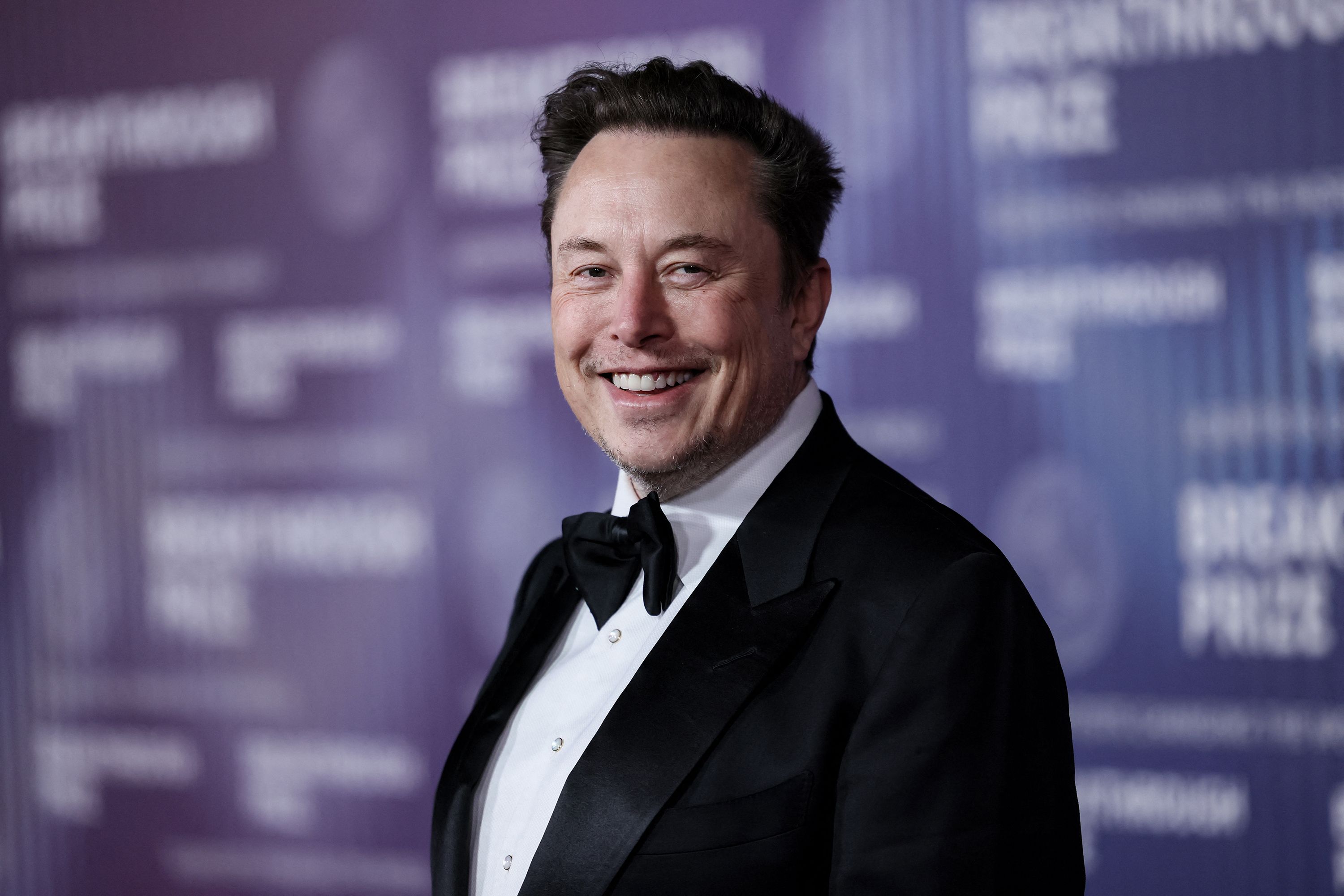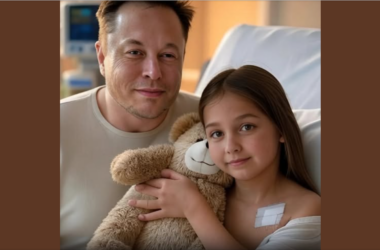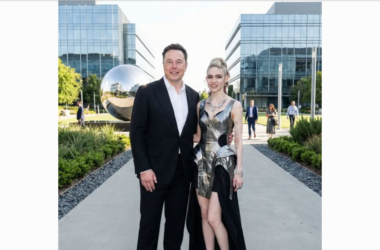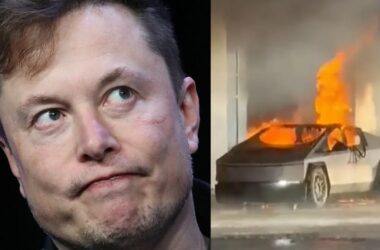
In a move that once again places him at the epicenter of technological evolution, Elon Musk has unveiled the long-anticipated Tesla Aircraft, a next-generation electric-powered aircraft that is already being hailed as a revolutionary leap forward in both aerospace engineering and sustainable transportation. The unveiling took place in typical Musk fashion—bold, unexpected, and electrifying—during a special Tesla keynote streamed to millions worldwide.
A Dream Takes Flight
After years of speculation, leaks, and scattered clues from Musk’s social media posts, the Tesla Aircraft is no longer a concept—it’s a reality. Backed by an eye-watering $13 billion investment, this aviation project represents not only one of Tesla’s largest financial commitments, but also a dramatic reshaping of what the future of flight could look like.
“This isn’t just about building a plane,” Musk declared during the unveiling. “It’s about redefining what we believe is possible in transportation—clean, quiet, fast, and efficient. The Tesla Aircraft is not a machine. It’s a vision realized.”
A Technological Marvel
The Tesla Aircraft, tentatively named Model A, is a fully electric vertical takeoff and landing (eVTOL) vehicle with a range of up to 750 miles and a cruising speed of approximately 400 mph. Built with lightweight carbon-fiber composites and powered by Tesla’s newly developed HyperLithium battery cells, it can recharge to 80% in just 20 minutes using a specialized charging infrastructure, also developed by Tesla.
Inside the aircraft, passengers will find the signature Tesla aesthetic—minimalist, digital-first, and fully autonomous. The cockpit is dominated by an AI flight interface that allows pilots to switch between manual and AI-assisted modes, while the cabin offers panoramic smart-glass windows, noise-canceling systems, and zero-emissions climate control.
Perhaps most impressively, the aircraft features zero-carbon propulsion and emits no greenhouse gases during flight—solidifying Tesla’s long-standing mission to accelerate the world’s transition to sustainable energy.

Disrupting a Century of Flight
Industry analysts are already calling the Tesla Aircraft a disruptive force that may upend century-old aviation norms. Its VTOL capability opens the door to urban air mobility, allowing it to bypass the need for long runways or traditional airports. City-to-city travel could soon take place from rooftop to rooftop, shrinking hours-long commutes into minutes.
With aviation contributing roughly 2.5% of global carbon emissions, the Tesla Aircraft presents a serious challenge to fossil-fuel-powered planes. Traditional manufacturers like Boeing and Airbus are now facing pressure to accelerate their own clean-energy aviation projects or risk falling behind.
“This is more than just a plane—it’s the iPhone moment of aviation,” says Dr. Lillian Carter, aerospace engineer and author of The Future of Flight. “Just like Tesla did with cars, it’s forcing everyone to rethink how air travel should work.”
Challenges Ahead
Despite the buzz, not everyone is convinced. Skeptics point to regulatory hurdles, infrastructure requirements, and battery limitations as potential stumbling blocks. Airspace regulation—especially for autonomous or semi-autonomous vehicles—is still in its infancy, and widespread adoption of eVTOL aircraft will require cooperation from governments, cities, and international aviation bodies.
Battery energy density, while improving, still trails behind the efficiency of aviation-grade fuel. However, Tesla’s new battery innovation reportedly delivers three times the energy density of current lithium-ion technology—enough to power the aircraft for regional flights, but not yet for long-haul international routes.
“There’s no question that the Tesla Aircraft is visionary,” says Professor Marcus Yi, an aviation policy expert. “The question is whether the world is ready to support it.”

The Musk Factor
Elon Musk, known for his ventures with SpaceX, Neuralink, and The Boring Company, has always aimed sky-high—sometimes literally. His track record, from launching reusable rockets to making EVs mainstream, lends credibility to the ambitious goals of this project. He has repeatedly shown that public skepticism can be turned into admiration—if backed by breakthrough results.
The Tesla Aircraft joins a growing portfolio of Musk’s transportation revolution, one that now spans land (Tesla vehicles), underground (Boring Company tunnels), orbit (SpaceX), and air.
“If you can move people on Earth with zero emissions and do it faster, cleaner, and smarter—why wouldn’t you?” Musk said.
What Comes Next?
Tesla has already begun limited production of the aircraft at a specially constructed facility near Austin, Texas, adjacent to the Gigafactory. A beta program is expected to begin by late 2026, with test flights in select U.S. cities and international urban centers.
The company is also partnering with SpaceX to explore how Tesla Aircraft technology could be adapted for high-altitude, near-space missions, merging two of Musk’s greatest passions: clean energy and space exploration.
For now, the world watches—and waits.
From a whisper of an idea to a $13 billion reality, the Tesla Aircraft is more than a machine. It’s a symbol of what happens when vision meets velocity, and one man dares to make the sky just another beginning




